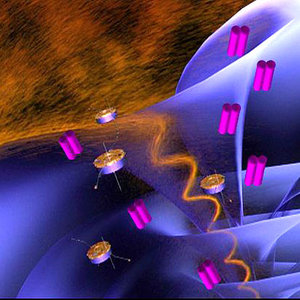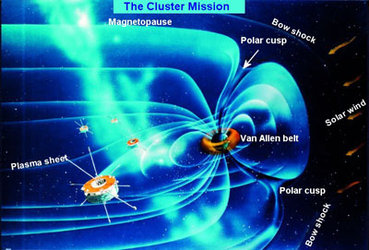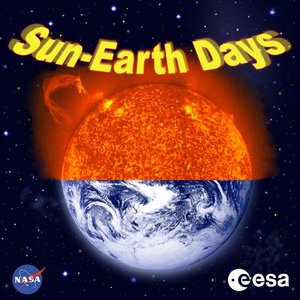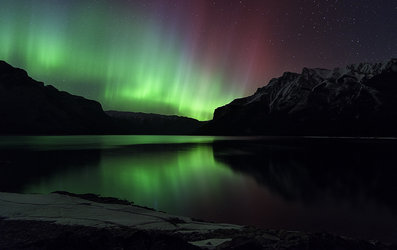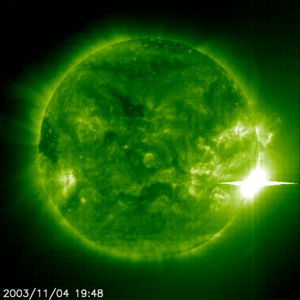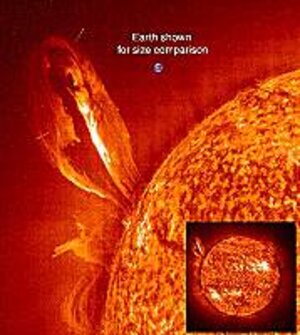Cluster's current affairs
High above our planet, it is mayhem. Tiny particles thrown out by the Sun are constantly colliding with Earth's magnetic field. This interaction causes giant electrical currents to flow above our heads of around one million amps!
Earth is surrounded by magnetic bubble called the 'magnetosphere'. It is generated in the molten centre of our planet and stretches for thousands of kilometres outwards into space.
The magnetosphere is essentially a 'buffer zone' between our planet and the wider environment of space. Particles coming from space have to cross the magnetosphere before they can interact with Earth, so it is important to understand this region if scientists are going to investigate the effects that incoming particles have on our planet.

These charged particles given off by the Sun, called the 'solar wind', create a shockwave when they collide with Earth's magnetic field. This deflects most of the particles around Earth in the same way that water flows around the bow of a ship.
ESA's Cluster quartet was launched to investigate this magnetic buffer zone and recently, European scientists took a step forward by using the four spacecraft to make the first measurements of the electrical current carried in the shockwave high above Earth.
They discovered that the current was one million amps - over 30,000 times larger than the current needed to run the a typical kitchen oven!
Why is Cluster not fried by this massive current?
This current was over 30,000 times larger than that needed to run a kitchen oven!
These currents are entirely natural and are spread over an extremely large area. In any one place, it is actually a very small effect because the environment being investigated by Cluster is almost empty! In every cubic centimetre, you would be lucky to find ten particles. That is more rarefied than the near vacuum in a television cathode ray tube.
Also, the magnetic field that they are interacting with is thousands of times less than the one we live in at Earth's surface. So, there is almost no danger to the spacecraft
In this exotic realm, collisions are strange to imagine because particles do not actually hit one another. Instead, the particles influence their neighbours using electromagnetic forces. The details of this process are still not clear.
As the pieces of the magnetosphere puzzle come together, it should also help to explain more phenomena in the Universe, such as eruptions on the Sun, star and planet formation, and even giant exploding stars. All seem to be governed by similar electromagnetic effects.





